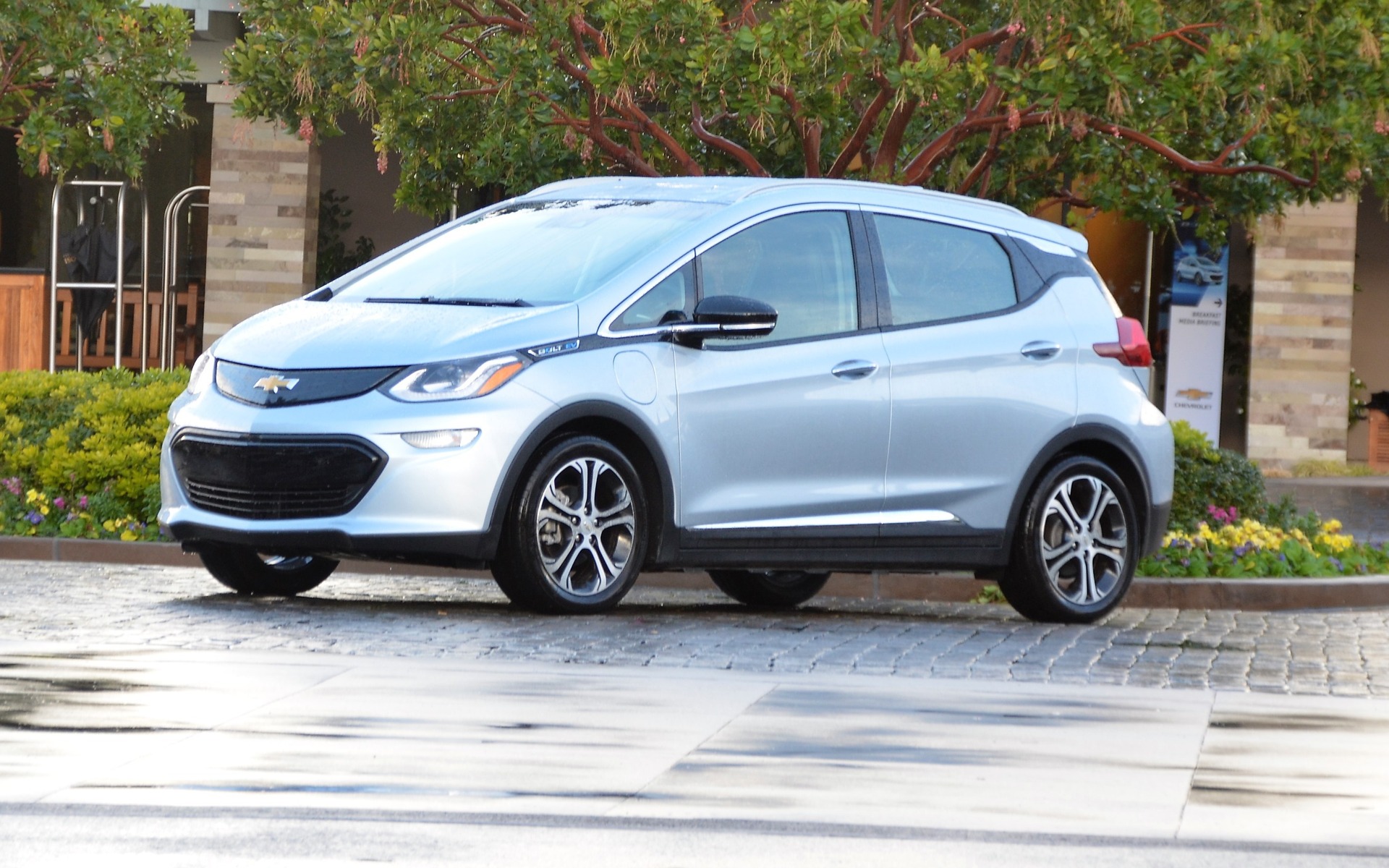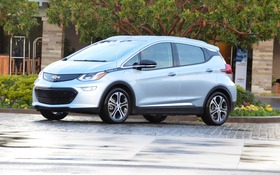2017 Chevrolet Bolt EV: King of a Whole New World

| Strong points |
|
|---|---|
| Weak points |
|
At the 2007 Detroit Auto Show, Chevrolet unveiled the Volt, an electric car equipped with a gasoline engine and a driving range of approximately 60 km. While it wasn't necessarily a commercial success, the Volt can be considered a technical success. And even though General Motors has screwed up infinitely less complex cars, the Volt lived up to its promise. An even more technically advanced—and still reliable—new-generation Volt came out in 2015.
Recent improvements to lithium-ion batteries have helped reduce battery size without affecting their capacity. A few years back, the Chevrolet Spark EV was GM's first foray into the world of fully electric vehicles since the Saturn EV1 (1997–1999), but a car designed for a gasoline engine and later transformed into an EV has its limits. The Bolt EV, on the other hand, has been completely electric since day one. GM’s engineers learned a lot from the Volt and the Spark EV.
- Also: 2017 Chevrolet Bolt EV Now on Sale in Canada
- Also: We’ll be Driving the Revolutionary 2017 Chevrolet Bolt EV!
The 2017 Chevrolet Bolt EV is a subcompact that’s just a smidge bigger than the Chevrolet Sonic. The Bolt EV's passenger compartment is surprisingly spacious, the dashboard is functional and the various controls are easy to use. There's a 10.2-inch screen in the centre stack that, as in any self-respecting electric car, displays the ups and downs of the battery, the electric motor, the relationship between the two as well as fuel consumption and pretty much anything else you can imagine. This information is well presented and clearly legible.
Same goes for the eight-inch screen located directly in front of the driver. Thanks to these graphics, you can adjust your driving style to make it as efficient and effective as possible. With a full charge and perfect road conditions, the Bolt EV can travel up to 380 km. It remains to be seen what that figure will be in Canada, in real conditions.

It's all about the battery
The lithium-ion battery has a 60-kWh capacity and is made up of 96 cells in 10 modules divided into five sections. This 435-kilogram pack is located under the cabin. It begins at the feet of the driver and ends in front of the rear suspension, thus freeing enough space for a proper trunk—479 litres with the seatbacks up and 1602 with them lowered.
As for the electric motor, it provides 200 horsepower and 266 lb.-ft. of torque. Thanks to its 7.05:1 differential ratio, GM is figuring on a 0-60 mph (0-96 km/h) time of less than seven seconds. I wasn't able to verify this number, but a few muscular standing starts executed on a wet surface demonstrated the traction limits of the Michelin Energy Saver tires (215/50R17), which are much more oriented toward fuel economy than performance. Personally, I would sacrifice a few kilometres of autonomy for enhanced grip.
Welcome aggressiveness
Here’s a fun fact: The 2017 Chevrolet Bolt EV is equipped with regenerative brakes that recover energy released from braking and return it to the battery to recharge it. In the Bolt EV, this system is smooth for drivers, but it can be made even more efficient if they activate a paddle located behind the left spoke of the steering wheel. This system, seen in the defunct Cadillac ELR and in the current Volt, is more aggressive and can help you bring the Bolt EV to a halt without even touching the brake pedal.
There are four modes, the first being for normal regeneration. At the other end of the spectrum, there's almost violent regeneration. Basically, by putting the shifter on L (Low) and using the paddle behind the steering wheel, the deceleration is such that you inevitably stop before the desired location—and without even touching the brake! Don’t worry, you get used to it fast. This method of slowing down reduces wear and tear on the brakes and, more importantly, revitalizes the battery. In heavy traffic, you can also gain up to 5% of driving range.
The Bolt EV comes with a 7.2-kW internal charger. Combined with a 240V home charger, the battery can fully charge in nine hours. On a 120V outlet, Chevrolet anticipates an operating range of 6.4 km per hour of recharge. On a 240V outlet, it’s 40 km per hour of charge time. And with a quick charger, it's 145 km for 30 minutes.
In all other regards, the Bolt EV is a conventional car. Its handling is surprisingly good and you'll find yourself eagerly taking one corner after another. The tires, however, lack grip and the A-pillars sometimes block your view. The steering doesn't provide much feedback, but it's neither too light nor too heavy, and it’s fairly precise.

$$$$$
In Canada, the base LT version of the 2017 Chevrolet Bolt EV sells for $44,495, which includes freight and preparation ($1,600) and the tax on the air conditioner ($100). The Bolt EV Premier will run you $49,495, including the same charges as the LT. Quebeckers will shave $8,000 off this price thanks to the provincial subsidy, while British Columbians will get a $5,000 price break and lucky Ontarians will save $14,000.
Since its introduction in January 2016, the Bolt EV has been consistently described as the car that’s redefining the electric automobile. I wouldn't go that far, but it does bring the concept into uncharted territory: that of an electric car built in large quantities, equipped with a serious operating range and sold at a relatively affordable price.
The Bolt EV has set a new benchmark. At some point, another car will ascend to the throne of this new world that we are only beginning to discover and will earn a place in the history of electric transportation. However, the Bolt EV will always be known as the trailblazer—and no one will ever be able to take that away from it.











